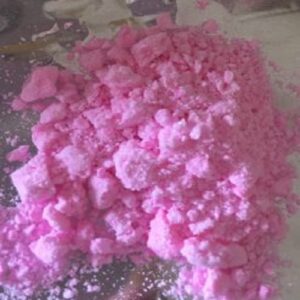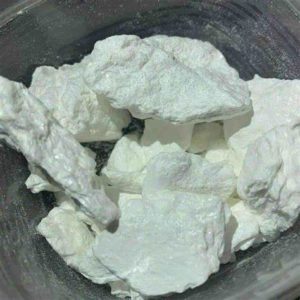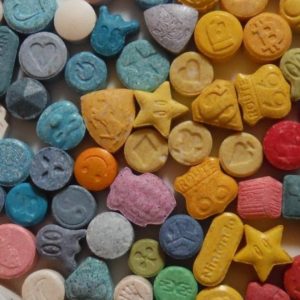Description
Where can I buy pink cocaine online?
Buy high-quality pink cocaine online from trusted suppliers, with discreet packaging, fast worldwide shipping, and full privacy protection.
We currently sell premium pink cocaine with consistent purity, ensuring maximum satisfaction for both personal and research use.

Our platform is increasingly chosen by our customers because we prioritize safety, fast shipping, and verified sourcing from reliable suppliers.
Every order is processed quickly to ensure same-day shipping and discreet delivery.
Whether you are buying pink cocaine for recreational use, research, or therapeutic purposes, we ensure that our product meets strict quality standards.
Because trust and privacy are essential, we use encrypted communication and secure payment options to protect the identity of every buyer.
Users worldwide place repeat orders due to our reliability, solid reputation, and dedication to customer service.
Order cocaine online today from a trusted source that puts your safety, comfort, and satisfaction first in every transaction.
Pink cocaine is a synthetic drug that has attracted worldwide attention for its unique color and effects.
This article will explain everything about pink cocaine, including its composition, effects, risks, and legality.
Understanding this drug will help you stay informed and safe.
What is pink cocaine?
Pink cocaine is a synthetic stimulant that comes in the form of a pink or reddish powder.
Unlike traditional cocaine, it is made in a laboratory from chemicals, not coca leaves.
It is often sold as a cheaper and more potent alternative to white cocaine.
The exact ingredients change frequently to avoid legal bans.
This makes pink cocaine unpredictable and dangerous.
Origin and Market of Cocaine.
Pink cocaine comes from illegal laboratories where synthetic stimulants are produced.
Manufacturers modify chemicals to create new drugs with different effects and colors.
Its popularity is growing because it circumvents certain drug laws.
The online market makes it easier to buy pink cocaine, with sellers targeting young users.
These factors contribute to its rapid global spread.
Cocaine Effects.
Cocaine is a powerful central nervous system stimulant, giving users an energetic and euphoric feeling.
It rapidly increases heart rate and blood pressure, which can be very risky.
Users feel intensely confident and become more talkative than usual.
Cocaine suppresses appetite, causing people to eat less while using it.
The drug increases body temperature and causes the pupils to dilate noticeably.
Many users feel agitated and show signs of irritability.
Anxiety and paranoia increase, especially with high doses or prolonged use.
Cocaine causes intense cravings that encourage repeated use, despite its harmful effects.
In the long term, it damages the heart, lungs, and brain, while mood disorders worsen.
This drug is addictive and difficult to overcome without help.
Chemical Composition of Pink Cocaine
Pink cocaine contains synthetic chemicals called cathinones or other stimulants.
These substances mimic the effects of cocaine, but are often more potent or riskier.
Manufacturers frequently change the formulas, making the composition of pink cocaine inconsistent.
This changing chemical composition results in varying effects and risks for users.
Test kits rarely detect all chemicals, adding to the danger.
How Pink Cocaine Affects the Body
Pink cocaine stimulates brain chemicals such as dopamine and serotonin.
This high produces euphoria, energy, and alertness, similar to that of traditional cocaine.
However, the synthetic substances in pink cocaine cause unpredictable effects.
Users feel stimulated, but side effects such as anxiety, paranoia, and hallucinations are common.
These effects can last longer than those of traditional cocaine.
Effects of Pink Cocaine
Using pink cocaine causes a strong boost of energy and pleasure.
Some users report that the effects last longer than regular cocaine.
Negative effects often include a rapid heartbeat, sweating, and chest pain.
Mental symptoms such as paranoia and confusion can be severe.
Due to chemical variations, the effects can vary significantly from batch to batch.
Risks and Dangers of Cocaine
Pink cocaine carries high risks due to the presence of chemicals and unknown dosages.
Overdoses are common due to the unpredictable strength.
Users are at risk for serious health problems such as heart attacks, seizures, and strokes.
The risk of addiction is high, with strong cravings and withdrawal symptoms.
The presence of contaminants in pink cocaine poses additional health risks.
Cocaine Cowboys
The term “Cocaine Cowboys” describes Miami’s booming drug trade in the 1970s and 1980s.
Drug traffickers transported large quantities of cocaine from Colombia to the United States by boat and plane.
They built vast criminal networks that brutally controlled the city’s drug market.
Rival gangs competed fiercely, leading to a sharp increase in murders and kidnappings.
Police struggled to curb rising crime and corruption within their ranks.
Drug traffickers flaunted their wealth with luxury cars and ostentatious lifestyles.
This chaotic era transformed Miami into a hotbed of crime.
Films and documentaries documented the intense and brutal realities of the drug trade.
Authorities redoubled their efforts to combat the drug trade and bring criminals to justice.
The “Cocaine Cowboys” have had a lasting impact on Miami’s police culture and policies.
How is cocaine sold?
Pink cocaine is sold online and through street dealers.
Online sellers use coded messages and anonymous payments.
The packaging is often colorful and attractive to young buyers.
Discreet shipping helps avoid customs checks.
These methods of sale ensure that pink cocaine reaches many users worldwide.
What is cocaine?
Cocaine is extracted from the leaves of the coca plant, which grows primarily in South America.
It is a powerful stimulant that acts directly on the central nervous system.
The drug blocks dopamine reuptake, causing a buildup of dopamine in the brain.
This buildup produces an intense feeling of pleasure and a boost of energy.
Cocaine is often used recreationally to feel alert and euphoric quickly.
In medicine, doctors rarely use it as a local anesthetic during certain eye or nose surgeries.
However, its illegal use is spreading worldwide due to its addictive properties and harmful effects.
Users are at risk of heart problems, anxiety, paranoia, and dangerous overdoses when using cocaine.
The drug is mainly found in the form of a white powder or crystals called crack cocaine.
Users snort, inject, or smoke it to experience its rapid effects.
Authorities are relentlessly combating cocaine trafficking and abuse to protect public health.
Reducing the Harm of Pink Cocaine
If you use pink cocaine, start with very low doses due to the risks associated with its potency.
Test kits can help identify dangerous chemicals in your sample.
Avoid mixing pink cocaine with alcohol or other drugs to prevent severe reactions.
Always have someone nearby in case of an emergency.
Seek immediate medical attention if you experience chest pain or seizures.
Treating Pink Cocaine Addiction
People addicted to pink cocaine need professional help for a safe detox.
Medical supervision can manage withdrawal symptoms and prevent complications.
Therapy helps users understand their addiction and avoid relapse.
Support groups provide a sense of community and motivation during recovery.
Research is underway to develop new medications to treat stimulant addiction.
How is cocaine made?
People harvest coca leaves from Erythroxylum plants, which grow primarily in South America.
They soak and grind the leaves with gasoline or kerosene to extract the cocaine alkaloids.
The cocaine-containing mixture is carefully separated from the leaf pulp.
They then mix this liquid with acid and water, which dissolves the cocaine.
By adding baking soda or ammonia, the alkaloid turns into a solid paste.
This paste dries and is then redissolved in solvents such as ether or acetone.
Again, this solution is then treated with acid to produce cocaine hydrochloride powder.
Finally, the powder is dried, pressed, and packaged for illegal distribution.
This process uses dangerous chemicals and causes significant environmental damage.
How long does cocaine stay in your system?
Cocaine remains in the blood for approximately 12 to 48 hours after use.
In most cases, it can be detected in urine for 2 to 4 days.
With heavy or frequent use, it can be detected in urine for 7 to 10 days.
The drug remains in saliva for 1 to 2 days after use. Hair tests can detect cocaine for up to 90 days or longer.
Individual metabolism and usage habits affect how long cocaine can be detected.
Testing methods also affect detection time, which varies depending on many personal factors.
Summary Pink Cocaine
Pink cocaine is a dangerous synthetic drug with unpredictable effects and risks.
Its increasing availability requires awareness and caution.
By staying informed about pink cocaine, users can avoid serious harm.
Harm reduction and treatment options exist, but prevention remains essential.
Continued efforts are needed to stop its spread.
FAQ.
What is cocaine?
A powerful and addictive stimulant made from coca leaves, usually sold as a white powder or crack crystals.
What is the difference between cocaine and crack?
Cocaine is a powdered hydrochloride salt, while crack is a smokable base form that is cheaper but more addictive.
How does cocaine affect the brain?
It floods the brain with dopamine, which produces a short-lived high followed by a crash that causes overwhelming cravings.
What are the immediate effects of cocaine?
Users feel euphoric, energetic, and alert, but may also experience paranoia, high blood pressure, or nausea.
What are the long-term health risks?
Chronic use can damage the nasal mucosa, cause heart attacks, trigger psychosis, and lead to serious addiction.
Can you overdose on cocaine?
Yes, overdoses can cause seizures, strokes, or cardiac arrest, especially when combined with other drugs.
Why is cocaine with fentanyl dangerous?
Fentanyl is 50 times more potent than heroin, and even small amounts of cocaine can cause a fatal overdose.
Is cocaine addictive?
Yes, it creates a strong psychological dependency, with users often seeking the initial high despite more serious consequences.
What are the symptoms of cocaine addiction?
Heavy use, financial problems, mood swings, nosebleeds (when snorted), and neglect of responsibilities.
How is cocaine addiction treated?
Treatment includes behavioral therapy, support groups, and sometimes medications for co-occurring conditions.
Does cocaine show up on drug tests?
Yes, urine tests can detect it for 2-4 days, while heavy use can be visible for weeks.
Does cocaine have medical uses?
In rare cases, it is a Schedule II drug in the United States (used as a local anesthetic during certain surgical procedures).
Where can I get help for cocaine addiction?
Call addiction hotlines or seek counseling and therapy.





Andrew Juliana –
Exceeded all my expectations.
Daniel Freya –
The packaging was neat and professional—very impressed.
Damian Floriana –
Worth the money, highly recommend.
Elijah Amara –
Perfectly meets all my expectations.